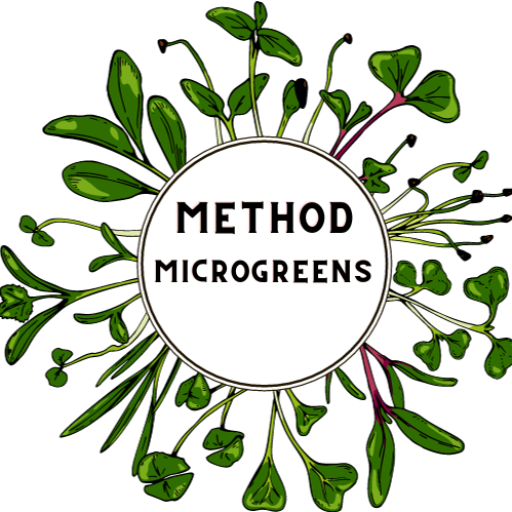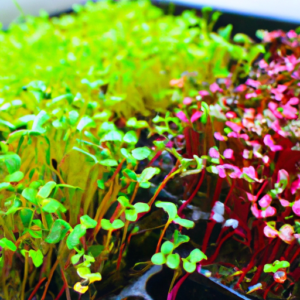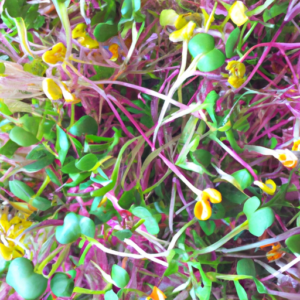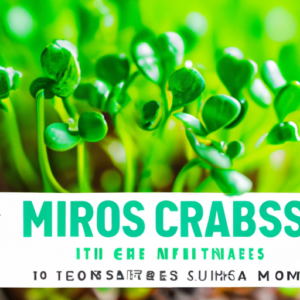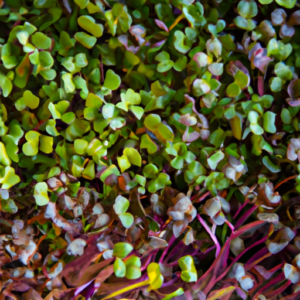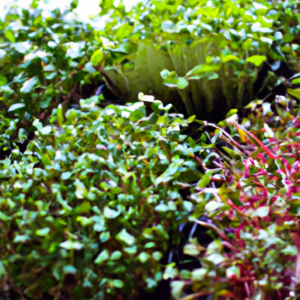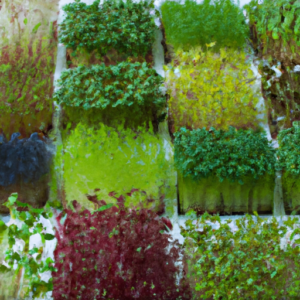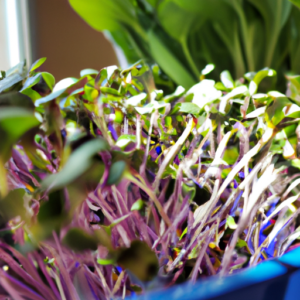Looking to improve your health naturally? Look no further than Microgreens World, your go-to website for all things microgreens. From delicious recipes to valuable information on nutrition, health benefits, and even business strategies, this site has it all. Discover how microgreens can benefit not just your hair, skin, eyes, and immune system, but also aid in weight management and natural detoxification. Learn about specific microgreens varieties like quinoa microgreens and their incredible nutritional benefits. Plus, delve into the business side of microgreens with articles on pricing, packaging, and choosing profitable varieties. Embrace a growth mindset and set yourself up for success in the microgreens business with Microgreens World. Your path to a healthier, happier you starts here.
Natural Detoxification with Microgreens
Detoxification is a natural process that helps to eliminate toxins and waste products from the body, promoting overall health and well-being. While there are many detoxification strategies out there, one often overlooked method is incorporating microgreens into your diet. Microgreens are young, edible plants that are harvested when they are just a few inches tall. They are packed with essential nutrients and phytonutrients, making them a great addition to any detoxification plan.
What are microgreens?
Microgreens are similar to sprouts, but they are grown for a slightly longer period of time, allowing them to develop true leaves. They are rich in vitamins, minerals, and antioxidants, and come in a variety of colors and flavors. Some popular microgreen varieties include broccoli, kale, radish, and sunflower. These tiny greens may be small in size, but they are big on nutrition.
How do microgreens support natural detoxification?
To understand how microgreens support natural detoxification, it’s important to understand the detoxification process in the body. The liver is the primary organ responsible for detoxification, but it needs the support of other organs and systems, such as the kidneys, lungs, skin, and digestive system. Microgreens play a crucial role in this process by providing the nutrients and antioxidants needed to support optimal detoxification.
Microgreens are packed with phytonutrients, which are compounds found in plants that have been shown to have detoxifying properties. These phytonutrients help to neutralize and eliminate harmful toxins from the body, protecting cells from damage and promoting overall health. Additionally, microgreens are rich in antioxidants, which help to reduce inflammation and oxidative stress, both of which can hinder the body’s detoxification process.
Choosing the right microgreens for detoxification
When it comes to choosing the right microgreens for detoxification, it’s important to select varieties that have been shown to have detoxifying properties. One group of microgreens that is particularly beneficial for detoxification is cruciferous microgreens. These include broccoli, kale, and cabbage microgreens, which are all rich in sulfur-containing compounds that support detoxification.
Other microgreens that are known for their detoxifying properties include cilantro, parsley, and wheatgrass. Cilantro has been shown to help remove heavy metals from the body, while parsley has diuretic properties that support kidney function. Wheatgrass is a potent detoxifier that helps to purify and cleanse the blood, promoting overall detoxification.
When it comes to growing specific detox microgreens, it’s important to consider the growing conditions. Some microgreens, like quinoa microgreens, require specific temperature and light conditions to grow properly. It’s important to do your research and ensure that you are providing the optimal growing conditions for the specific microgreens you choose.
Including microgreens in your diet
To reap the benefits of microgreens for detoxification, it’s important to incorporate them into your daily diet. The recommended daily intake of microgreens varies depending on individual needs, but generally, a handful of microgreens per day is a good starting point.
There are many ways to incorporate microgreens into your meals. One simple way is to add them to salads. Microgreens add a fresh, vibrant touch to any salad, and their delicate flavor pairs well with a variety of dressings and toppings.
You can also use microgreens as garnishes for various dishes. Sprinkle them on top of soups, stir-fries, or roasted vegetables to add a burst of color and flavor.
Another popular way to enjoy microgreens is by adding them to smoothies and juices. Simply blend them into your favorite smoothie recipe or juice them with other fruits and vegetables for a refreshing and detoxifying drink.
Microgreen detox recipes
To help you incorporate microgreens into your detoxification plan, here are a few simple detox recipes:
Detoxifying Microgreen Salad
Ingredients:
- A handful of mixed microgreens (such as broccoli, kale, and cilantro)
- 1 cucumber, sliced
- 1 avocado, diced
- 1 lemon, juiced
- 1 tablespoon olive oil
- Salt and pepper to taste
Instructions:
- In a large bowl, combine the microgreens, cucumber, and avocado.
- In a small bowl, whisk together the lemon juice, olive oil, salt, and pepper.
- Pour the dressing over the salad and gently toss to combine.
- Serve immediately and enjoy.
Green Detox Smoothie
Ingredients:
- 1 cup spinach
- 1 cup kale
- 1 banana
- 1 cup unsweetened almond milk
- A handful of microgreens (such as wheatgrass or cilantro)
- 1 tablespoon chia seeds
- 1 tablespoon almond butter
- Ice cubes (optional)
Instructions:
- Place all the ingredients in a blender and blend until smooth and creamy.
- Add ice cubes if desired and blend again until smooth.
- Pour into a glass and enjoy as a refreshing and detoxifying smoothie.
Detoxifying Microgreen Juice
Ingredients:
- A handful of microgreens (such as parsley, cilantro, or wheatgrass)
- 1 cucumber
- 2 celery stalks
- 1 green apple
- 1 lemon, peeled
Instructions:
- Wash and prepare all the ingredients.
- Juice the microgreens, cucumber, celery stalks, green apple, and lemon.
- Stir well and pour into a glass.
- Enjoy this vibrant and detoxifying juice.
Microgreen Detox Soup
Ingredients:
- 1 tablespoon olive oil
- 1 onion, chopped
- 2 cloves garlic, minced
- 4 cups vegetable broth
- 2 cups mixed microgreens (such as kale and spinach)
- 1 cup broccoli florets
- 1 cup diced zucchini
- Salt and pepper to taste
Instructions:
- In a large pot, heat the olive oil over medium heat.
- Add the onion and garlic and sauté until softened.
- Add the vegetable broth, microgreens, broccoli, and zucchini.
- Bring to a boil, then reduce the heat and simmer for about 15 minutes, or until the vegetables are tender.
- Use an immersion blender or allow the soup to cool slightly before transferring it to a blender. Blend until smooth.
- Season with salt and pepper to taste.
- Serve hot and enjoy the detoxifying benefits of this delicious soup.
Other detoxification strategies
While incorporating microgreens into your diet is a great way to support natural detoxification, there are other strategies that can enhance the detoxification process.
One important aspect of detoxification is hydration. Drinking an adequate amount of water throughout the day helps to flush out toxins and waste products from the body. Aim to drink at least eight glasses of water per day, and consider adding lemon or cucumber slices for extra detoxifying benefits.
Incorporating fiber-rich foods into your diet is another important strategy for detoxification. Fiber helps to sweep toxins out of the digestive system and promotes regular bowel movements. Foods such as fruits, vegetables, whole grains, and legumes are all excellent sources of fiber.
Certain herbs and spices have been shown to have detoxifying properties. Incorporating herbs like cilantro, parsley, ginger, and turmeric into your meals can help to support the body’s natural detoxification pathways.
Avoiding processed foods and toxins is another important aspect of detoxification. Processed foods are often high in additives, preservatives, and artificial ingredients, which can put a strain on the body’s detoxification processes. Opt for whole, unprocessed foods whenever possible, and choose organic options to minimize exposure to toxins.
Promoting healthy gut bacteria is also crucial for detoxification. Probiotics, found in fermented foods like yogurt, sauerkraut, and kimchi, help to support a healthy balance of bacteria in the gut, which is essential for detoxification.
Enhancing detoxification with microgreens and exercise
Exercise not only promotes overall health and well-being but also plays a role in supporting the body’s natural detoxification processes. Physical activity helps to increase circulation, which allows toxins to be more efficiently transported and eliminated from the body.
When combined with microgreens, exercise can have an even greater impact on detoxification. The nutrients and antioxidants found in microgreens help to fuel the body for exercise and support the body’s detoxification processes. Together, microgreens and exercise create a powerful detoxification duo.
Different types of exercises can support detoxification, including cardiovascular exercises, strength training, and yoga. Cardiovascular exercises such as jogging, cycling, or swimming help to increase heart rate and circulation, promoting the elimination of toxins through sweat and improved blood flow.
Strength training, on the other hand, helps to build and maintain lean muscle mass. Muscles play a crucial role in detoxification, as they help to remove toxins from the bloodstream and organs. Incorporating strength training exercises into your routine can help to enhance the body’s detoxification processes.
Yoga is another excellent exercise for detoxification, as it helps to stimulate circulation, improve digestion, and support the body’s natural detoxification pathways. Certain yoga poses such as twists and inversions are particularly beneficial for detoxification.
When engaging in exercise for detoxification, it’s important to take precautions and consider your individual fitness level. Start slowly and gradually increase the intensity and duration of your workouts. Listen to your body and rest when needed. If you have any health concerns or limitations, consult with a healthcare professional before starting a new exercise routine.
Benefits of microgreen detoxification
Incorporating microgreens into your detoxification plan can offer a range of benefits for your health and well-being.
One of the main benefits of microgreen detoxification is improved digestion. Microgreens are rich in fiber, which helps to support healthy digestion and promotes regular bowel movements. This can help to prevent constipation and promote the elimination of waste products and toxins from the body.
Another benefit is increased energy levels. Microgreens are packed with essential nutrients and antioxidants that help to nourish the body and provide sustained energy throughout the day. When you support your body’s natural detoxification processes with microgreens, you may notice an increase in energy levels and overall vitality.
Enhanced immune function is another advantage of microgreen detoxification. Microgreens are rich in vitamins, minerals, and antioxidants that help to support a healthy immune system. When your immune system is strong, you are better able to fight off infections and illnesses.
Better skin health is also a potential benefit of microgreen detoxification. The antioxidants found in microgreens help to protect the skin from damage caused by free radicals, promoting a healthy complexion. Additionally, the vitamins and minerals found in microgreens help to nourish the skin from the inside out, supporting a smooth and radiant complexion.
Microgreen detoxification can also support weight management. By providing the body with essential nutrients and antioxidants, microgreens help to support healthy metabolism and can aid in maintaining a healthy weight. Additionally, the fiber found in microgreens helps to promote feelings of fullness, reducing the likelihood of overeating.
Safety considerations
While microgreens are generally safe to consume, there are a few safety considerations to keep in mind.
It’s important to properly wash and handle microgreens to minimize the risk of foodborne illness. Wash microgreens thoroughly under running water, and gently pat them dry before consuming. If you are growing microgreens at home, ensure that you are using clean and sanitized growing trays and equipment.
If you have a known allergy or sensitivity to any specific microgreens, it’s best to avoid consuming them. If you are unsure about whether or not you have a sensitivity, start by consuming a small amount and monitor your body’s response.
If you are pregnant, nursing, or have any underlying health conditions, it’s best to consult with a healthcare professional before incorporating microgreens into your diet or starting a detoxification plan.
Conclusion
Natural detoxification is an essential process that helps to eliminate toxins and waste products from the body. By incorporating microgreens into your diet, you can support your body’s natural detoxification processes and promote overall health and well-being. Microgreens are packed with essential nutrients, phytonutrients, and antioxidants that support detoxification and offer a range of health benefits. From improved digestion to increased energy levels, microgreen detoxification can help you feel your best. Remember to choose the right microgreens for detoxification and consider other detoxification strategies, such as staying hydrated, consuming fiber-rich foods, and engaging in regular exercise. With a balanced approach to detoxification, you can optimize your health and well-being with the power of microgreens.
